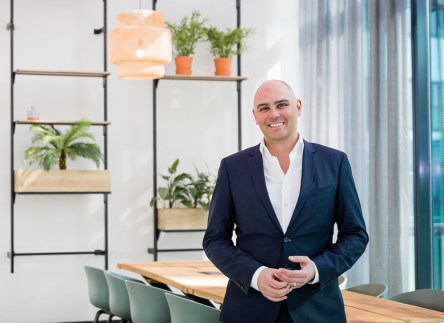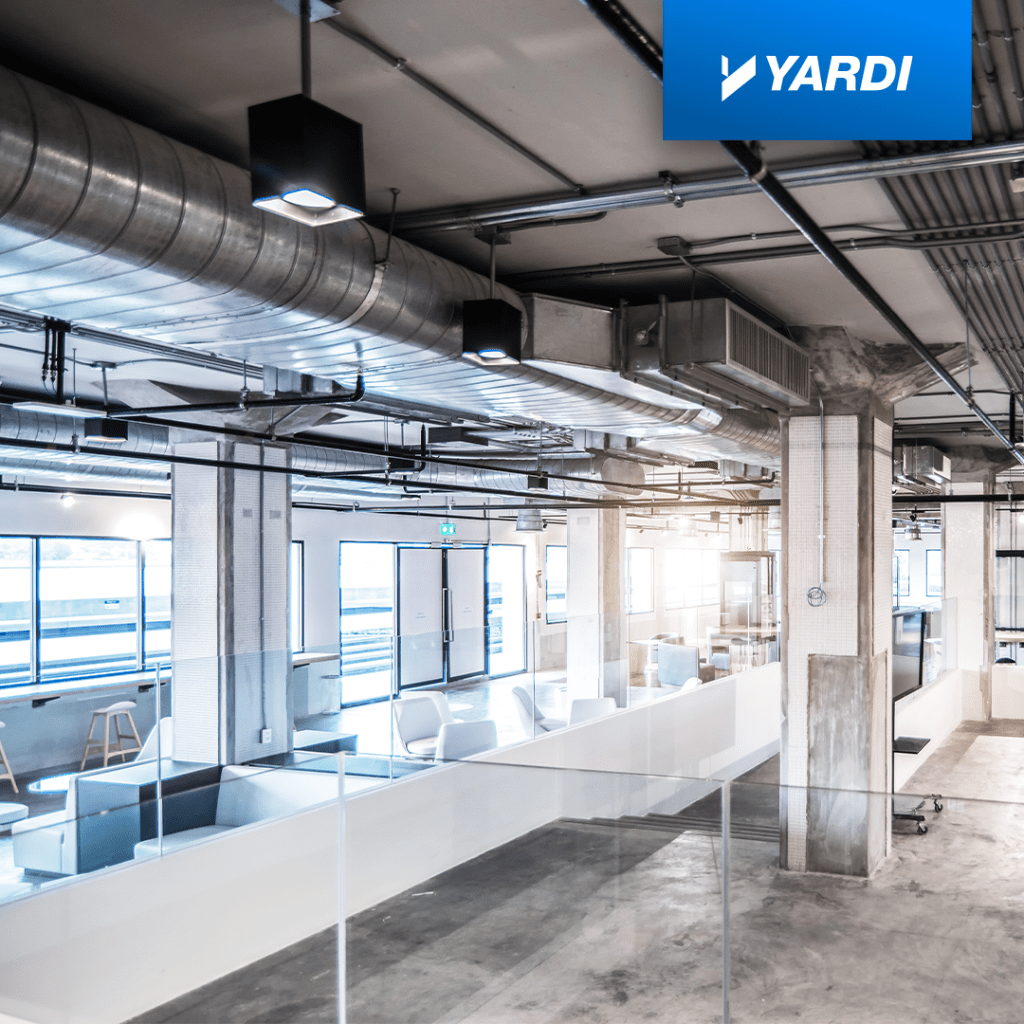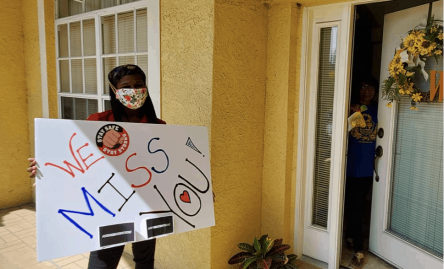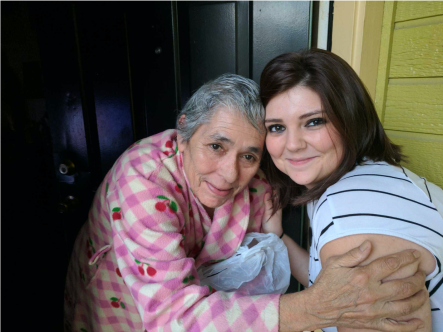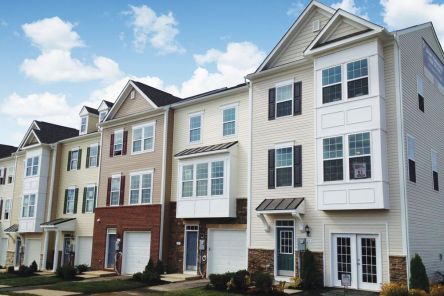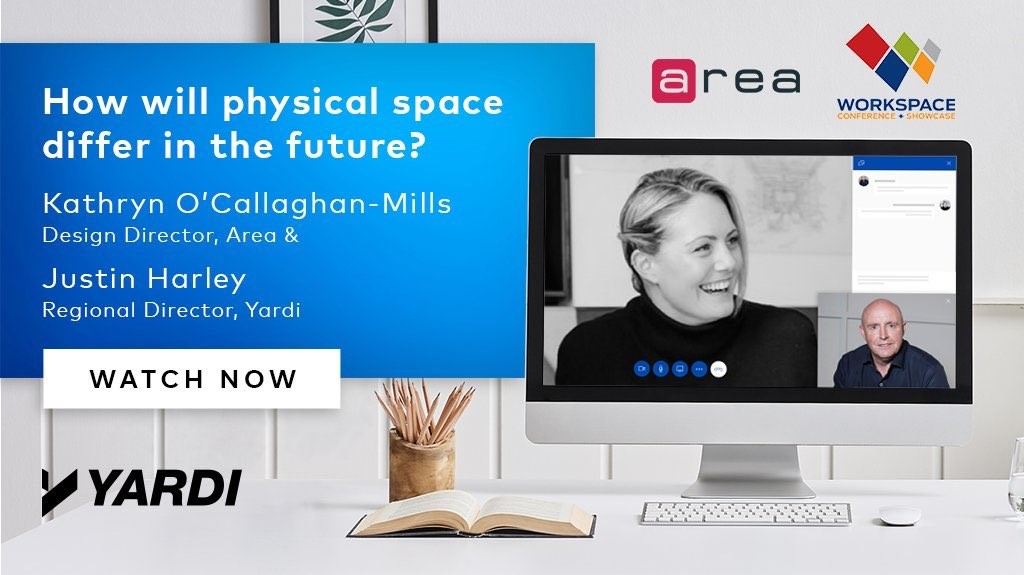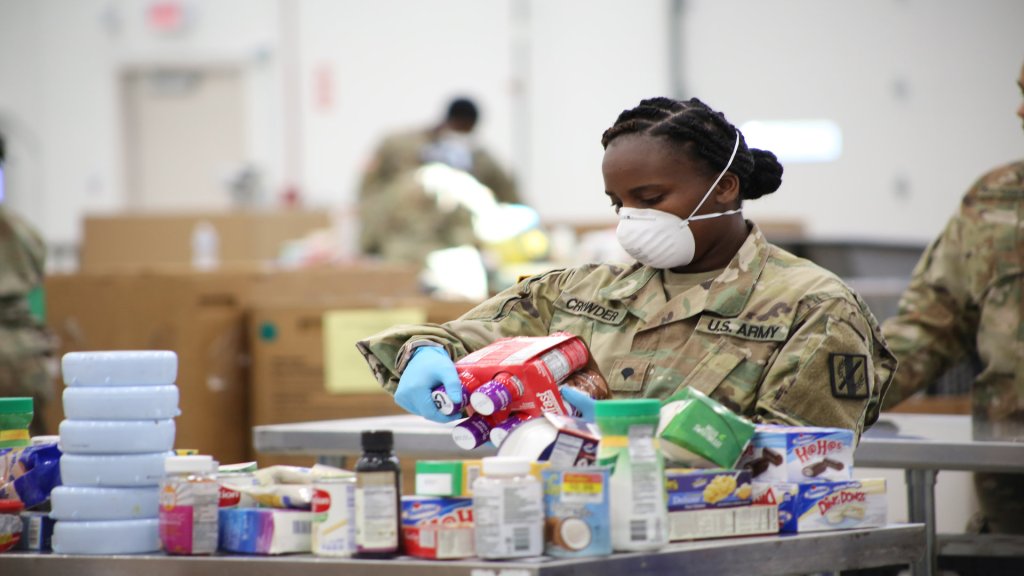It’s hard to imagine entering August with the COVID-19 pandemic still causing mass disruption throughout the commercial real estate industry. While there are varying degrees of guidelines and protocols for reopening buildings, the general consensus is that a large percentage of tenants needed help to navigate these times. Whether it was in the form of rent concessions, deferrals or any other tactic to prevent going under, tenants are reaching out to property managers more than ever. As part of Yardi’s Innovator Sponsorship of the July CRETech virtual conference, Brian Sutherland, commercial industry principal, had a chance to host a discussion with Paul Gaines, managing director of asset management for Accesso Partners. Accesso, based out of Hallandale, Florida, manages a portfolio of over $3.3B in assets across 21 cities in 8 states. Managing Deferral Requests Gaines explained they initially had 150 tenants across the portfolio who requested rent relief. Accesso then requested three things: 1) Ask the tenant to look thoroughly at their insurance coverage for any pertinent information. 2) Ask the tenant to apply for government assistance. 3) Ask the tenant to send complete financial documentation to Accesso so they could work on a plan together. Gaines revealed that his company had been able to reach agreements with 35 tenants on lease amendments or deferrals, without granting any abatements. While it’s a difficult time for all, it is important to realize the difference between those who truly need assistance and those who simply aren’t able to use their office space but are continuing business operations successfully. Thanks to quick and concise decision making within the executive team at Accesso and consistent communication with tenants, Gaines said they have seen 96-97% timely collection across the portfolio since work from home orders were enacted. The senior...
Assisted Living Aid
COVID-19 Relief for Providers
Testing kits, sanitization materials and personal protective equipment are essential tools in the battle against COVID-19 for senior living providers. Unfortunately, these resources are ballooning budgets for organizations already operating on thin margins. So as talks of further coronavirus relief packages continue in Congress, a coalition of senior living associations are pushing for direct aid to help cover these costs and ensure resident safety. AHCA/NCAL, Argentum and LeadingAge have taken a clear position: Billions of dollars in relief have already been given to health care providers, including skilled nursing facilities, but private-pay assisted living has so far seen no financial support. Their call for aid is being echoed by lawmakers too. Rep. Kay Granger recently wrote an editorial on The Hill requesting the U.S. Department of Health and Human Services (HHS) to provide help and resources to senior living facilities. “The administration did a good job of prioritizing nursing homes early on in the pandemic so that they could get the personal protective equipment (PPE) supplies they needed. But many of our elderly don’t live in nursing homes; they live in senior living facilities, like Sagora Senior Living in my congressional district,” Granger writes. “We need to focus on getting resources to help these vulnerable Americans. And we need to do it now before it’s too late.” To facilitate a potential distribution, the senior living group built an online portal where providers could enter their information. The data is now being packaged for the HHS, which has been allocated COVID-19 relief funding from the CARES Act passed in March. The associations want to stress that there is no guarantee the funds will be received, but the effort does bring the private-pay industry one step closer to seeing it happen. And although the current deadline...
Data Drives Success
Yardi EU Perspective
Real estate asset management firms are facing extraordinary challenges in the aftermath of the COVID-19 outbreak. Some may emerge from the crisis relatively unscathed. Others might not be so fortunate. Social distancing requirements and work-from-home strategies, prompted by COVID-19, have rapidly amplified the importance of operational and financial data, its accessibility and team connectivity. What matters almost more than the data itself, however, is the means of obtaining it efficiently and using it effectively to benefit clients, investors and other stakeholders. That’s not easily done without the right technology. In the world of real estate asset management, data comprises information that reveals a portfolio’s health, such as revenues, debt, risk, occupancy and sales, along with property-level operations such as energy consumption and accounts receivable. Two distinct groups need this data: operations groups tasked with effective management of the portfolio, property and tenants; and those who focus primarily on investors along with the organisation’s tactical and strategic issues. Some systems compile data from multiple disparate systems, making usable data a moving target. This approach – which prevailed in most property management industry vertical markets until the last couple of decades — is complicated, cumbersome and prone to error. For asset and operations managers to remain nimble, act proactively, anticipate and react decisively, they need a way to stabilise and gain instant access to it. That’s why connectivity is the key value proposition in asset management and the reason that sophisticated yet user-friendly asset management software applications that collect, process and apply such data across the asset management lifecycle are increasingly relevant. All user groups benefit when the data their business depends on is readily available. Fortunately for them, today’s asset management technology platforms assimilate all asset management information at the property and portfolio levels and...
Safe Workplaces
Tech to help during COVID-19
We are nearly four months into the COVID-19 pandemic and businesses have had to adjust their daily operations to reopen for staff and guests. Every aspect of sanitation, proper distancing, touchpoints and other routine business functions are now altered to improve the safety and peace of mind of workers returning to the office. Coworking industry case studies On a recent Realcomm webinar, Yardi vice president of coworking, Dale Hersowitz, said that some aspects of technology already being implemented prior to the pandemic are now even more useful to help maintain productivity and safety. For example, in the coworking industry, fully transactional websites and apps for meeting room bookings, desk reservations and virtual space tours help facilitate a completely distanced and safe experience. Staples, whose brand is most associated with office supplies, started a coworking brand in 2019 called Staples Studio. They repositioned part of their stores into shared workspaces and on their website they list everything from meeting room space to private offices, making it quick and easy for a prospect to become a member and complete transactions. This shift to a mobile experience has begun to replace the in-person meeting with a front desk associate or community manager and it now grows to more prominence during COVID. “One of the keys is to use apps that will not only show you the product but the availability of the product,” Hersowitz said. In coworking, member retention is always a driving factor with a high turnover rate month-to-month. One of the main ways to increase retention while members are still largely not entering your space is to use apps that allow for as much community interaction as possible. Launch Workplaces, a Maryland-based coworking space with six locations, is using a member portal to drive community,...
Stories of Hope
Lifting Spirits in Senior Living
Although a few states have begun relaxing visitation restrictions for assisted living facilities, the pandemic isn’t over yet. So senior living providers have continued to follow stringent protocols for protection. They’re doing all they can to keep residents healthy – and happy. Here’s another roundup of clients with uplifting stories to brighten your day: Festivities for Father’s Day Since families were unable to celebrate Father’s Day in person with their loved ones, staff at Merrill Gardens went above and beyond to make the day special for the dads in their communities. Employees in Monterey created little gift bags, provided lunch and hired a live jazz band to brighten things up. Staff at other communities, including Willow Glen and Madison, did their own versions of gift baskets as well. Check out Merrill Gardens’ blog post for the Father’s Day photos. Bringing families one step closer Over the past few months, many senior living communities have implemented their own version of window visits or visiting stations with barriers to protect residents. Aegis Living has taken the idea one step further by designing “outdoor living rooms,” complete with comfy chairs and decorations, to go with the plexiglass shields. “With each passing week of residents being physically separated from loved ones, we knew we had to find a better way,” said Kris Engskov, president of Aegis Living. “Design consulting and support from infectious disease experts and physicians helped us create these beautiful, new Outdoor Living Rooms to bring families together again – safely.” Horses with hats pay a visit While there’s no replacement for a family member dropping by to say hi, there’s no stopping a smile if horses in a clown hat and tiara walked up to your window. At Maple Wood Alzheimer’s Special Care Center, that’s...
Matrix Studies Up
Student Housing Insights
As colleges and universities announce varied plans to cope with coronavirus this fall, what will be the impact on student housing owners and operators? Some definitive answers were delivered in a July 15 webinar from Yardi Matrix, which also marked the launch of the Yardi Matrix Student data service. Market coverage includes over 2,000 universities and colleges nationwide, including the top 200 investment grade universities across all major collegiate conferences. Reports will also include data into shadow markets, defined as campus-proximate housing that often is rented by college students, though it may not be labeled as dedicated student housing. “The college experience is going to change, and has to change until there is a vaccine in place. This is a fall semester issue and probably into the middle of the spring semester,” Jeff Adler, vice president of Yardi Matrix, told the over 400 attendees at the outset of the online presentation. But that’s not all bad news for student housing, especially for providers with shadow market properties. Of the 200 universities Matrix researchers surveyed for the first study, many have announced plans to reduce dorm capacity levels to accommodate social distancing protocols. This means that more than 60 percent of students attending schools in the Yardi 200 will be living in such shadow market housing – and the total national percentage is higher. “Reduced dorm capacity requirements are a tailwind for off-campus housing,” Adler said. “Is student housing pandemic proof? I would say that it’s pandemic resistant. There is some choppiness expected, but I think overall the sector is going to hang in there.” Long term, the U.S. is expected to see an overall decline in its population of college-age adults, but with more Americans than ever earning four year degrees, attendee figures should...
Changemakers Series
Brenda Bacon, Brandywine
Will my loved one be happier and healthier in senior living or at home? It’s a question many families are asking themselves now during the pandemic. They’ve seen headlines about case numbers, but they also know they can’t provide the care and attention needed by themselves. “If COVID has taught us anything, it has taught us that we are health care, but it doesn’t mean that we have to be health care in the traditional sense of a hospital or a nursing home,” said Brenda Bacon, president and CEO of Brandywine Living. “We have to be able to convince the public or customers that their loved one will be safe and secure in addition to being happy.” A former board chairman for Argentum, Bacon has a lot of insight into the challenges and opportunities of senior living. She’s taken that unique experience to Brandywine, where she strives to make their communities the right mix of “health care and hospitality and fun.” Bacon has been recognized by Senior Housing News as a Changemaker for her contributions to the industry, and during her interview, she opened up on the difficulties posed by the coronavirus – as well as her strategies for keeping it at bay. Check out these excerpts to see how Brandywine is keeping its residents happy and healthy. What needs to be done to achieve that safety and security you’re thinking about? Any operational changes you’re implementing at Brandywine? On April 4th, we instituted a rule that says “one job only.” In the healthcare industry, employees traditionally work in two or three different healthcare institutions; they’ll work a shift at a skilled nursing and then they’ll go to an assisted living or the hospital, the doctor’s office. Nurses and care managers tend to have...
ICSC Webinar
CRE Adapts to Changing Times
In an ICSC webinar held in late June, Brian Sutherland, Yardi industry principal, moderated a panel discussion about how current economic and social challenges are forcing commercial operators to adapt to a changing market. They discussed the importance of AR management and evaluating tenant risk to accurately project future revenue and overcome the effects of the pandemic. Panel of experts: Gary Shaw – President, Arcadia Management Christine Mastandrea – EVP, Whitestone REIT Sutherland: On the Yardi side, in mid-March, we shifted 7,000 employees to work from home basically overnight. Can you talk about how you transitioned early in the response to the pandemic? Mastandrea: Within a very short timeframe we moved into a radical simplification mode. We expanded our meeting times to include more team members to be involved for consistency of communication all the way to the front-line ranks. We organized our team around four functions: client engagement, vendor management, stress testing and inner workforce. We moved our workforce offsite and we’ve gone from Zoom meeting to Zoom meeting. Client engagement is where we spent most of our time and we oriented about 80% of our workforce toward client engagement. We made sure we had our “four As”: alignment, assignment, accountability and then autonomy. We funneled all requests through one person in our legal department and made sure we had this process smoothed out over time. One major key was daily posting of cash collection and making sure everyone has an understanding of where we are and where we’re missing collection. We stopped mass emailing and instead got in contact on the phone with everyone we could, to understand who’s open and who isn’t, who is considered essential business and started discussing [Paycheck Protection Program] (PPP) funding. Shaw: We moved everything to the...
Relocations + Rent Drops
COVID-19 Prompts Migration
Already apparent in the U.S., COVID-19 has resulted in a migration from major cities and falling rents. As the housing industry braces itself against continued impacts from the virus, will both trends continue into the third quarter? Market analysts, real estate agents and renter surveys give us clues about what to expect. Are people really moving away from cities as a result of COVID-19? Yes. People are leaving cities to avoid COVID-19 risks and disturbances. Though it is a misconception that population density equates to higher risk, perception matters. The perceived increase in risk has made city residents feel less safe. That fear, coupled with other disruptions, motivates relocation for those who can afford it. Pew Research Center reports that 3% of U.S. adults moved due to the pandemic and about 6% had a member of their household relocate. Of those surveyed, 28% moved to reduce their risk of contracting the virus and 8% moved due to job loss. About 20% moved to be closer to family. Younger people make up a unique portion of those who relocated. Roughly 9% of adults ages 18-29 relocated due to the virus. This includes 23% of respondents who were university students forced to vacate their campuses. Even New York– the market trendsetter that has captured hearts for generations– is seeing mass movements to the nearby suburbs. Real estate agents Susan Horowitz and Monica Schwerberg explored the details in an interview with NPR. “We are seeing 20 offers on houses. We are seeing things going 30% over the asking price. It’s kind of insane,” Horowitz said. “It is a blood sport.” She adds, “Every last bit of it is COVID-related.” Schwerberg agrees, “In the month of April, where we typically would get maybe 75 inquiries in a month, we had over 400 inquiries.” People who once loved the city atmosphere are seeking locations with less population density, which is falsely assumed to correlate with increased infection risks. Additionally, many breadwinners are now working from home. Remote work opportunities have made commute times less of a factor in housing decisions. Since March 2020, about 10,000 New Yorkers filed for address changes to the state of Connecticut alone, reports Hearst Connecticut Media. Nationwide, U.S. Postal Service data indicates that southern Florida and southern California are popular relocation destinations. Who is moving during COVID-19? While some people are relocating due to job loss and financial difficulty, there is a correlation between job security, higher incomes and relocation. In short, households with higher incomes can afford to sell their current home (potentially at a loss) or terminate a lease early in favor of getting a new home in the suburbs. Higher income households are also more likely to have remote work. The ability to maintain income while working from anywhere permits the flexibility needed to relocate during the pandemic. Additionally, higher income households represent the demographic most likely to own a vacation home. About 13% of those who relocated moved into their second home or vacation home, reports the Pew survey. How does COVID-19 relocation impact the rental market? Yardi Matrix analyzed asset performance data from 107 major metropolitan areas between April and May 2020. During that time, multifamily rents declined by .4% nationwide. Overall, twice as many markets witnessed rents decline than rents rise. “Multifamily’s nearly decade long run of healthy performance increases came to an abrupt and unexpected end this year,” said Jeff Adler, vice president of Yardi Matrix. “Job losses have been particularly high among apartment renters, and simply collecting rents and maintaining occupancy is a new area of focus for owners and managers.” The report suggests that the pandemic’s influence on work conditions, public health metrics and social trends will continue to impact the housing marketing for the next several years. “If renters decide to eschew urban apartments for a more distanced standard of life in the suburbs or smaller cities, multifamily could...
Experts Assess
COVID-19 Energy Impacts
Along with tracking the momentous public health and economic implications of COVID-19, renewable energy advocates are keeping a close eye on how the pandemic is affecting the Earth’s environmental well-being. The International Energy Agency, which advocates for sustainable energy policies, reported that average global road transport activity fell by 50% of the 2019 level in the first quarter of 2020, while aviation activity declined 60%, spurring an unprecedented decline in world oil demand. The U.S. saw a 50% reduction in the use of jet fuel and 30% less gasoline consumed; meanwhile, natural gas use in commercial and residential buildings dropped by almost 20% from late March to early June of this year, according to a study of COVID-19’s effects on energy and the environment by researchers from the MIT Sloan School of Management, Yale University and Northwestern University. Reductions spark optimism “Overall, these reductions reflect a 15% total reduction in daily CO2 emissions, which is the largest annual percentage decline for the U.S. in recorded history,” says MIT Sloan professor Christopher Knittel, one of the researchers. The recent drop in consumption and emissions offers a glimpse of a cleaner future – if the effort is sustained after the crisis abates. In the wake of COVID-19, “it is essential that we build back better. We need to create a more resilient and sustainable clean energy system in order to reduce the risk of facing the catastrophic crises that climate change could bring,” says Jules Kortenhorst, CEO of the Rocky Mountain Institute, writing for the World Economic Forum. That means prioritizing structural changes that “make a real difference for the energy transition in the longer term” rather than jumping on “the bandwagon to push the green agenda in short-term relief packages,” say researchers from ETH Zurich’s...
Market Upsides
Maximizing potential as coronavirus continues
Even before the COVID-19 pandemic, multifamily market experts were talking about preparing for big economic changes. Now that rising unemployment rates, benefit delays and social distancing have created new challenges for real estate managers and renters alike, it’s time to re-think every aspect of your operations. Here’s some good news: there are real upsides to the downturn, including opportunities to move business online and improve communication to form stronger relationships with your customers. Read on for five key takeaways from Yardi’s operational strategies webinar that can help you right now and into the future. 1) Maximize marketing websites Apartment searches are on the rise and units are being rented sight unseen — and it’s all happening online. How can you keep up? Provide a virtual marketing and leasing experience from start to finish. Make sure your websites provide plenty of curb appeal for your listings, and include optimized photos, videos and 3-D floor plans along with virtual meeting and tour options. Offer live chat to answer questions from prospects and consider a chatbot when your agents are unavailable — a “contact us” email address or web form isn’t enough anymore. Use nudge marketing campaigns and page narratives to help prospects make timely rental decisions. And this is critical: bring your entire leasing process online from application to self-screening to lease execution with an electronic signature. Are you providing unit touring options? If you’re not offering self-guided tours yet, in this new world of contactless marketing it’s a great way to sign more leases. Even before the pandemic, self-guided tours were growing in popularity, and now they are a must to ensure social distancing and a contactless experience for your staff and customers. It’s important to plan for self-guided tours at the site level including the ability to verify prospect identities remotely before allowing access to your units. With COVID-19 concerns, you’ll also need a strategy for cleaning and sanitizing units after every visit. Once you figure it out, you’re likely to reap the benefits of agentless tours. 2) Consider strategy changes Take a good look at your marketing spend and identify which channels have provided you with long-term contracts and where your new opportunities are coming from. With a growing number of prospects willing to rent a unit sight unseen you need to take advantage of contactless opportunities. Ramp up your targeted marketing to those socially distant customers with a clear message about your easy online leasing process. Once you drive that motivated traffic to your website, those prospective renters can enjoy all the good stuff covered above including around-the-clock applications and leasing. 3) Send the right message Now is a great time to build stronger relationships with your residents. More than ever, communication with customers and within companies is critical. Be sure that your content, messaging and tone are not only aligned with your brand and our current reality but also resonate with what people really care about. We all need to feel safe and supported, and multifamily managers are in a unique position to create an inclusive and positive community for staff and residents. You can offer residents who are struggling financially payment plans and deferral options. If you haven’t accepted credit card payments for rent in the past, maybe now is the time to allow it to help keep your payment percentages high. There are also the day-to-day messages you need to push out to make sure your social distancing policies are followed when common areas and amenities are used. You will most likely see a big difference when it comes to renewing leases and keeping quality residents for the long term. 4) Reduce leasing risk With high unemployment and apartment fraud on the rise, you need to be sure you know exactly who you’re renting to. That doesn’t mean that prospects who are short on cash won’t be quality residents, so you’ll want to screen...
Long Term Impacts
New Yardi Matrix Report
With the U.S. economy in a recession, unemployment numbers sky high and COVID-19 cases surging in the south and west, multifamily owners and operators face challenging times ahead. And things may get worse before they get better, according to a new special report from Yardi Matrix. The report is based on a study of 107 major metros, with data reflecting April and May 2020 asset performance. Over that period, multifamily asking rents dropped .4% nationally, and twice as many markets saw rents decline as opposed to increase. Renters are looking for less expensive units, with the biggest impacts in the sector felt by Class A+ properties. Rents for “luxury lifestyle” properties dropped by -1.2% over the last two months, compared to a decline of .5% for “renter by necessity” properties. “Multifamily’s nearly decade long run of healthy performance increases came to an abrupt and unexpected end this year,” said Jeff Adler, vice president of Yardi Matrix. “Job losses have been particularly high among apartment renters, and simply collecting rents and maintaining occupancy is a new area of focus for owners and managers.” Multifamily had a long run of strong performance – asking rents grew by 26% nationally between January 2015 and 1Q20. But going forward, the future looks cloudy at best. “The shape of the recovery remains unclear. More importantly, the pandemic is spurring changes in working conditions and social trends that will impact housing demand for years to come,” states the report. What’s ahead will be determined by a complicated combination of economic factors, public health metrics and renters’ feelings about the future. If renters decide to eschew urban apartments for a more distanced standard of life in the suburbs or smaller cities, multifamily could be in for a prolonged pain period. Gain...
Building Economic Resilience...
The Value of Diverse Housing
Is it possible to shorten the fallout of an economic crisis? Researchers at the University of Maryland believe it’s possible. Preventative measures can mitigate the impact of economic downturns by creating neighborhoods that are naturally resilient to variances in economic performance. Diverse neighborhoods, researchers propose, can decrease the rate of foreclosures and sales before and after economic crises strike. What puts homogeneous neighborhoods at risk? After World War II, planners developed neighborhoods with a single income bracket in mind. Like their urban counterparts, these planned communities segregated individuals and families based on their earning power and, occasionally, place of employment. During difficult economic times, neighborhoods that lack diversity are prone to clusters of foreclosures and sales before and after the peak of the recessionary activity. Neighborhoods that relied heavily on one employer also suffered severe spikes in financial difficulties. The homogeneous nature of these neighborhoods left them vulnerable. If one company or industry suffered, the entire neighborhood suffered as well. Neighborhoods with high concentrations of bank-owned and for-sale homes take longer to recover from economic downturns. Residents that struggled with mortgages may have postponed home maintenance in an effort to conserve resources for mortgage payments. As a result, many foreclosed homes show signs of physical deterioration. Additional damages may occur during the eviction process. Neighborhoods with high concentrations of foreclosures and sales experience the devaluation of nearby homes. Additionally, as lender confidence decreases, so will investment in the area. To create neighborhoods that are more resilient in the face of economic trouble, University of Maryland researchers suggest that developers shift to mixed-income housing models. Uncovering the economic disadvantages of homogeneous neighborhoods The study began by creating a data set that logged zoning and foreclosures across 14 metropolitan statistical areas (MSA). Researchers selected MSAs from throughout the...
Warm Social Distance
Today’s Welcome Packages
Virtual and self-guided tours have helped numerous property managers fill a lease up during social distancing. When it comes to welcoming new residents, though, creativity and agile software make it possible to maintain space without seeming distant. Personalization is essential Personalization is a key element in helping new residents feel welcomed. These days, many of the best practices for personalizing welcome packages still apply. They simply require a bit of creativity to implement while keeping space, health, and customer satisfaction at the forefront of welcoming efforts. Leasing agents can assist welcoming committee members with helpful tips about the new residents. When your marketing and leasing platform integrates with your property management software, the notes that you put in prospects’ files easily transfer to resident files! Note pet ownership and areas of interest such as container gardening and DIY crafts. Your notes can inform the types of gifts included in each new resident’s welcome package. Remember: thoughtfulness makes a greater impression than price! Even when you can’t greet new residents face-to-face, the thoughtfulness and personalization of your welcome package can speak for you. Local treats delivered Since COVID-19 precautions required businesses to limit on-premises operations, delivery features have become a necessity. Many locally-owned small businesses that did not invest in delivery services have implemented them in recent months. The shift to delivery works in your favor. Include gift cards and discount vouchers in your welcome basket. Gifts from locally-owned shops and restaurants have an even stronger appeal. Every transaction is vital to small businesses. Your patronage demonstrates your efforts to support entrepreneurs in the community while giving residents a preview of the hyper-local treasures in the neighborhood. Use your online concierge platform as a delivery system for your welcome packages. Notify residents when the package...
Reopening Multifamily Amenities
Tools and Tips for Property Managers
It has been about four months since U.S. multifamily communities restricted access to amenities like gyms and swimming pools. You’re likely eager to resume offering the stellar features that helped build your community brand. (Your residents are probably antsy, too!) As shelter-in-place restrictions lift, you may be unsure how to reopen those amenities with ongoing social distancing. It’s a valid concern, but we’re here to help. In this post, we’ll explore tips and tools for reopening your community amenities and public spaces. Before reopening your amenities Start by creating a reopening plan. The National Apartment Association (NAA) released recommended best practices for reopening amenities at multifamily properties. Along with those best practices, consider that a single reopening plan may not work for all properties, even those within a portfolio. It is important to customize a plan for each property so that directives align with the relevant guidelines issued by national and local health officials. You will also want to review your liability insurance policy and update it with pandemic provisions. Many insurance providers and legal institutions offer helpful customizable templates. Communicate these updates and obtain compliance signatures from property managers, vendors, staff and residents. Watch this webinar to learn how LumaCorp and Gables Residential navigated the reopening process. Preparing maintenance staff and vendors for reopening Your maintenance staff will be working double duty. You may even need to expand your maintenance team. Keep all team members on the same page with the latest cleaning schedules and updates using a mobile maintenance app. Yardi Advanced Maintenance provides the tools that you need to assign tasks, track and supervise your site’s schedule. Manage all preventive, routine and emergency maintenance within a single app. This tool will allow staff members to access revised cleaning schedules on the go and signoff on completed tasks without revisiting the office. Outside vendors will also need additional resources to stay up to date on revised supply and service schedules. Use a mobile vendor management system like VendorCafe to issue updates to existing vendors and onboard new vendors. You can also use the software to pay vendors, which will reduce traffic in the leasing office as well as lower printing, mailing and storage costs. Watch this video to learn how VendorCafe streamlines vendor communication and payments. Restoring full functionality to the leasing office If the community is like a body, then the leasing office is its brain. It’s the epicenter of services and sales that helps the community function. Due to its necessary function, the leasing office probably never completely closed, and that’s okay. The key now is to resume as much functionality as possible with fewer nonessential interactions. Use online payments and online maintenance requests to limit foot traffic in the leasing office. The RentCafe Resident app empowers residents to do both with a single login. The app has experienced 89% year-over-year adoption growth due to its simple user interface. You can also offer services to prospects while practicing social distancing at the leasing office. A survey of 3,000 apartment shoppers reveals that 83% of respondents would take a self-guided tour if available. Their reasons vary: nearly 60% of respondents wanted to observe social distancing. About 63% of renters want to tour model units at their own pace and 43% appreciate more flexible scheduling. Prospects can easily schedule self-guided tours online through your RentCafe marketing website. The app will automatically create a guest card and convenient customizable follow-ups. Join a webinar to learn more about the versatility and flexibility of RentCafe. You’ve got mail … and lots of packages Mailrooms have remained open at all properties, yet revisiting mailroom protocols can improve safety for occupants. Mailrooms are rarely spacious, which makes social distancing difficult for residents and mail personnel. Consider limiting the number of people who can enter the space at any given time. It may also be beneficial to close the mailroom for disinfecting after...
SRI Keeps Spirits High...
Heroes Work Here
It’s been months since the coronavirus arrived and upended normal as we knew it. But slowly and surely, things are stabilizing, business are reopening and people are going back to their routines. In senior living, however, safety measures remain for the protection of residents and staff. It may be many more months until anything resembling “normal” returns for older adults in communities. But that doesn’t mean they can’t have fun and live their lives in the meantime! For the previous two posts on positive senior living news, I covered different Yardi clients across the country. This time, we’re focusing on one in particular: SRI Management. They recently highlighted creative activities at their communities in their own blog post and invited us to share them with you. Here are a few stories from their residents and staff. Enjoy! Music video goes viral With ample social distancing, handmade signs and a great sense of humor, residents from the Cove at Marsh Landing showed how much they’ve already overcome throughout their lives, affirming their strength and resolve to beat this pandemic too. All to the tune of Stayin’ Alive by the Bee Gees. Check out the news article for the video. Delivering care outside the community With visitor restrictions still in place, spouses of residents haven’t been able to see their loved ones as much as they’d like, and many are battling loneliness without the support of an engaged community. So the workers at the Superior Residences at Brandon came up with the idea to go visit the residents’ spouses themselves and give out gift bags. They called it “Operation Spread the Love.” Mother’s Day drive-through parade For Mother’s Day, residents at The Arbors of Gulf Breeze were treated to a parade on wheels, courtesy of family...
Creating Comunidad
Yardi client profile
Even before the COVID-19 pandemic, Antonio Marquez’ Comunidad Partners’ properties in Sunbelt markets throughout the U.S. were standouts in the affordable housing sector. Not only did they offer safe and affordable residences for families, but residents of the portfolio’s approximately 10,000 units could take advantage of after school programs, health and wellness classes, financial literacy and tax help courses, and more. Featured at a 2018 Fannie Mae conference hosted by The Atlantic and profiled in this exceptional video posted by Affordable Housing Finance, it’s easy to grasp the sense of community that Comunidad Partners created from its start in 2007 – when Marquez founded the company to invest in underserved workforce and affordable housing communities. Asked often about his “why” for such deep community involvement, Marquez says he was motivated by his family background. As immigrants and entrepreneurs, his parents Juan Antonio and Pamela instilled a strong sense of community responsibility in Antonio Jr. His father began his working life as a vineyard worker, but ultimately started one of the nation’s largest distribution networks of Hispanic foods from his garage. His son learned that with a good idea, and a lot of hard work, amazing outcomes could be achieved. After finishing his undergraduate degree at Cal Poly San Luis Obispo in California, he began exploring the multifamily industry. “I wanted to provide more than just shelter. These are living, breathing souls and families,” Marquez said. “I really boiled down my ‘why?’ to what I took for granted growing up. My parents made sacrifices and were phenomenal in terms of supporting us and providing a quality roof over our head, food on the table, a good education even though we were a low income family. My ‘Why?’ was to provide these same impactful things to...
Meeting the Need
YVVP Steps Up During Pandemic
Yardi Vasti Vikas Prakalp (YVVP), Yardi’s dedicated corporate social responsibility project in Pune, India, supports NGOs and implements direct interventions in urban communities (vastis) of Pune city. As the global COVID-19 pandemic has impacted India severely, YVVP has pivoted to help. Normal field visits to the vastis halted when a lockdown to prevent COVID-19 spread began in late March. The CSR team switched to using virtual platforms to stay connected with beneficiaries and stakeholders, to understand the situation on the ground and address unprecedented issues. This has presented various challenges. Many vasti residents do not have smart phones, internet access or resources to recharge phones. “Lockdown restrictions in congested spaces combined with loss of jobs have created high levels of fear, anxiety and frustrations among family members, in addition to hunger,” said Bharati Kotwal, head of CSR at Yardi Pune. “Our stakeholders in vastis, such as community mobilizers, sanitation committee members and youth leaders have helped us to identify the neediest families and do what we could to relieve some of the distress.” Aiding with sanitation and sustenance needs YVVP has provided relief to vasti residents in two significant ways during lockdown: Provided dry ration kits (food and grocery items) to families identified through the YVVP field team and NGO partners. Supplied masks, sanitizer and sanitary pads to those isolated in shelters located in municipal schools. “We provided dry ration kits to over 2800 households in three months through NGOs or by procuring items directly and distributing them ourselves,” Kotwal said. “Though NGOs, foundations, individuals and Pune Municipal Corporation (PMC) were providing similar help, we could reach those who were left out because of our connections in the vastis.” Keeping community toilets clean and functional is one of the largest efforts of YVVP. The...
COVID Communication
Senior Living Email Best Practices
For the loved ones of residents in senior living, concerns about the coronavirus have not yet abated, even as states reopen and life gradually returns to “normal.” Residents in communities are at a higher risk for COVID, and restrictions on visits remain in place to protect them. So it’s not hard to see why family members would want transparency from senior living providers. Has anyone there caught it? What protocols are in place to help? How is everyone holding up? Since the start of the outbreak, dozens of states have instituted reporting guidelines that require assisted living and skilled nursing facilities to report their COVID numbers to public health authorities. But some states have gone even further by asking providers to share those same numbers with the family members directly on a daily basis. Of course, many providers have already taken great steps to expand their communications. They’ve added FAQs to their website, posted notices to their online resident portal, and have sent plenty of emails to loved ones, residents, staff and vendors. At Yardi, we’ve had clients reach out for help setting up email campaigns like these, so we’ve put together a quick tutorial video that covers how you can create emails that can be sent in bulk to a customized list of contacts. Senior living email correspondence in Yardi Both Yardi Voyager Senior Housing and RENTCafé Senior CRM offer email correspondence. Whichever you choose to use, you can leverage templates to pull in information like the recipient’s first name, today’s date and facility name from your database. That way, you can easily customize your emails in bulk. The video will walk you through how you can choose your information categories, format your text and then filter your contact list. It also explains...
Getting the Job Done
Hagerstown Thrives While Distant
Public housing agencies across the country are open for business, even when their physical offices are closed. Their services and resources are literally vital to the health, safety and welfare of millions of Americans. How do they make it work? Hagerstown Housing Authority (HHA), which serves the city of Hagerstown in Maryland, uses specialized software solutions from Yardi that connect their staff to critical workflows that serve waitlisted households, applicants, participants and residents, and landlords. “The coronavirus is an awful situation, of course, but it has given us an opportunity to help our staff realize the benefits of cloud-based software, as well as online solutions for our applicants and residents,” says Sean Griffith, executive director for HHA. HHA has been serving its residents for more than 65 years. As a high-performing housing authority, as distinguished by the U.S. Department of Housing and Urban Development, HHA owns and/or oversees 1,320 dwelling units in 11 communities and more than 900 Housing Choice Vouchers for use by residents who do not dwell in HHA-owned properties. Approximately 12% of the city’s residents are assisted by HHA housing resources. The waiting list for housing assistance from HHA grows daily as economic variables affect local residents. “There has been a definite uptick in need for housing assistance. Our properties are in demand, and the waiting list for Housing Choice Vouchers is growing,” says Griffith. Using RentCafe PHA, HHA makes it possible for interested households to place themselves on its waiting list. The process is handled completely online without the need for an office visit. That feature is particularly timely for HHA given the circumstances created by the COVID-19 pandemic. The agency went live with the Yardi PHA suite in the spring of 2019 and considers cloud functionality one of the...
Avenue5 Moves Ahead
With Online Services
With the outbreak of COVID-19, the new normal of social distancing has created a big challenge for many businesses — and real estate firms are no exception. Fortunately for many multifamily operators, opportunities to streamline common business processes using online software solutions are helping to surmount challenges, while delivering unexpected benefits. That’s what Avenue5 Residential has discovered. The Seattle-based firm, which focuses on third-party multifamily property management, oversees more than 375 properties and 70,000 units in 13 states, with offices in Denver, Orange County, Phoenix, Portland, Salt Lake City, San Diego, Spokane and greater Washington, D.C. Recognized as one of NMHC’s Top 50 Managers, Avenue5 is employing digital solutions from Yardi to protect their associates and customers during the COVID-19 pandemic, all without sacrificing service or missing revenue opportunities. In order to continue serving clients and residents, collecting rents, completing work orders and maintaining site operations while following CDC and regional health recommendations, Avenue5 relies on the Yardi Voyager and RentCafe online platforms. With COVID-19 concerns requiring the company to close its property leasing offices to foot traffic, Avenue5 further deepened their focus on promoting online options to residents at the onset of the outbreak; it subsequently saw a jump in resident online payment adoption from 50% to 70% as a result. April and May rent collections were strong, and executives are optimistic about collections in the months to come. “We expect to see a long-term benefit as customers acclimate to the ease of paying online, and as our associates reduce the amount of time spent on manual processes,” said Pål Ottesen, chief financial officer at Avenue5. Ottesen also noted that moving rent payments online had reduced numerous risks associated with accepting paper checks. In order to support residents directly impacted by COVID-19, and...
Rents Drop, Prompting Concern
Industry insight from Yardi Matrix
When you think about a 0.3 percent drop in anything it hardly seems like a big deal. It’s just 3 pennies on every 10 dollars. If you are an apartment operator and that reflects the national average on rents for May compared to April, some would figure it’s something not too difficult to make up. But what if it isn’t? The three-tenths of a percent is the drop for one month, and 12x that comes to 3.6 percent annually. Quickly, that could become serious. During what would typically be the middle of prime leasing season, rents declined nationally by 0.3% on a month-over-month basis, reports Jeff Adler, vice president of Yardi Matrix. He describes that drop in rents as startling. “Is it a harbinger of things to come? A warning sign?” Adler says. “When rents being offered to new residents drop like that month-over-month, year-over-year you have to ask yourself.” Adler says current national multifamily occupancy rates are mostly steady (a good thing). And there’s no deterioration in demand as measured by apartment search activity, which is also positive. “But this is peak leasing season,” he adds. “Falling like this would be at a rather significant clip. If we see it again next month, then demand will not have stabilized. And data show this is happening to high-end apartment communities.” The steepest declines in rents on a MoM basis were seen in major gateway markets that were among the first to impose strict lockdowns. Smaller markets are not immune and have seen substantial MoM rent declines as well. For this “general rolldown” in rents, Yardi Matrix has observed year-over-year price decreases of -0.6 percent to -1 percent for houses for rent in Los Angeles, San Jose, Houston, Orlando, Denver, San Francisco and Chicago. Unprecedented Swiftness Many long-standing observers and employees of the multifamily industry can point to real estate’s cycles, and to the Great Depression, back around 2008-09, when rent declines were similar. “But the swiftness of what we’re seeing now is unprecedented,” Adler says. “Back then, job formations were slowing and you could almost read between the lines to know something bad was coming up. There were signals. This time, it’s sudden. This time it’s being caused by a health issue. We are counting on a vaccine or treatment to COVID-19 to turn the tide.” Job creation, of course, is helpful. Job losses, however, equate to income losses and ability to pay the rent, and inability for owners to stabilize (if not raise) rents. “For the sake of the industry, let’s hope that six months down the road things are different,” Adler says. “Wouldn’t it be great to go back to how it was in February, or even in 2019?” Some can speculate that the “busy season” for leasing could move to fall this year. Look at These Numbers Yardi Matrix also reports that national average rents decreased $5 to $1,460. Kansas City (0.4 percent), San Antonio and Baltimore (both 0.1 percent) were the only markets to show increases from April to May; 23 markets remain negative on a month-over-month basis. the last two months overall, rents have declined by $13. “If rents continue this rapid downward trend, we could be looking at alarming numbers by the end of the summer,” Adler says. The markets with the most severe MoM declines include Houston and San Jose (both -0.9 percent) and Nashville, Orange County and Seattle (all -0.8 percent). Houston tends to be among the most volatile markets in a normal month, and given the rapid decline in oil prices the road to recovery in Houston could be extended. San Jose, Orange County and Seattle were among the first markets to impose stringent lockdowns. Seattle only entered Phase 1 of reopening on June 5. Social Unrest Could Affect Urban Rents Apartment operators also must consider the social unrest that is going on in many urban centers. “What’s going on right now...
Flexspace Perspectives
New bitesize videos
Yardi is excited to present a series of bitesize insight videos in partnership with Property Week, ahead of Workspace 2020. This series of interviews gathers perspectives from all corners of the flexible workspace industry, reflecting on the uncertain times that we have found ourselves in during recent months. Justin Harley, regional director at Yardi, captured insights from design company Area, flexspace operator Uncommon and data analytics company The Instant Group. In the last of the series, Harley also summarised Yardi’s technology outlook. How will physical space differ in the future post-covid-19? First to take the Zoom stage, was Kathryn O’Callaghan-Mills, Design Director at Area. Harley jumps straight in with the burning question, “how will physical space differ in the future post-Covid-19?” “The beauty of workspace is that it is so flexible, and the key point of our industry is to give the user a flexible experience,” comments O’Callaghan-Mills. “Operators need to consider two main elements; people and space.” O’Callaghan-Mills explains how operators can make an impact by considering these two pertinent points, including enabling social distancing with space management and rotating people within those spaces. Staying true to the bitesize theme, O’Callaghan-Mills promotes a digestible way of thinking with a ‘the now, the next, and the future’ mindset. With ‘the now’ comprising of immediate measures you can take; ‘the next’ acts as a hybrid of the immediate measures and new normal measures; and ‘the future’ which leverages on the innovation and technology investments you make today. How will the landscape of Flexspace change? Harley also spoke to Chris Davies, Director of Uncommon. Davies expressed that “the traditional faceless office is dead.” And how “the real estate industry needs to support the needs, amenities and service demands of flexspace clients.” “Covid-19 has fundamentally changed the landscape – it’s sped up pre-existing trends such as looking after staff. Staff are the most important part of any business and make up 60-80% of most businesses and flexible office space is the corporate enabler.” Davies explained that office users want a healthier workspace and activity-based working – something that the flexspace market has a hold on over traditional office. Davies expressed how corporate companies will continue to absorb the majority of flexspace market. In 2019 40% of occupiers were corporations – Davies only sees this expanding. Companies signing 5-10-year lease agreements will be a thing of the past in Davies’ opinion. “why wouldn’t a business use a better environment for their staff?” How will the demand for flexible workspace differ post-Covid-19? James Rankin, Head of Research for The Instant Group, gave some insightful perspectives on how the demand for flexspace might differ post-Covid-19. Rankin broke his summary down into three main points explaining that demand for corporates will increase, diversification of location of the office portfolio will be prevalent, and the entrepreneurial sector will flourish. Rankin shared insights from a recent research project conducted by Gartner; “Flexspace operators are moving away from the reactionary thought process that Covid-19 has seen them take, and are now moving to make more strategic decisions about the future of flexible workspace. They are looking to reduce costs, make efficiencies and increase the flexibility of their portfolios as a whole.” Diversification of the office portfolio will be ever more important Rankin explained, “we’ve seen a large number of companies look at how they can expand out of large metropolitan, central hubs.” Rankin explained that the supply isn’t there yet in suburban markets. “We’ve seen a spike in interest for flexible workspace. 5 out of our top 13 global coworking markets are now showing interest levels higher than pre-Covid-19. The bounce back is starting to speed up.” Technology Insights & Predictions Last but not least, Harley closed the Bitesize series with a summary of his predictions and insights that Yardi has taken from clients in the industry. “The future of flexible workspace is healthy and positive,” Harley states. Harley...
Stepping Up
Food Bank Series: Atlanta
(Part three of a three-part series highlighting the efforts of food banks during COVID-19. Read about food bank efforts in Santa Barbara and Raleigh.) Always a supporter of the communities in which its offices are located, during the last three months Yardi has committed funds for hunger relief services across North America. This week, the real estate software leader announced a second round of donations for the food banks it supported in March. (Read previous blogs on the Santa Barbara County and Raleigh food banks.) An example of one outreach was a grant to the Atlanta Community Food Bank (ACFB). “I know what a big difference this will make in so many lives locally,” says Don Rogers, general manager for Yardi Atlanta. Ben Burgess, ACFB corporate relations manager, received the donation from Yardi. “I’m speechless. This is the kind of overwhelming generosity that makes me love what I do and working with companies like yours,” Burgess said. From bad to better beyond expectations In early March, ACFB relocated to a new office. When COVID-19 business closures hit, the organization was still trying to acclimate to its new environment. “Most of us were still figuring out where all the light switches were and which printers were ours when this hit,” says Burgess. “We immediately lost our biggest fundraiser, the annual Hunger Walk/Run 5K and our annual Golf Tournament.” As consumers stocked up on supplies to shelter in place, retail stores became overwhelmed. Empty shelves left little to donate to the food bank. “Retail store donations represent round 1/3 of our food inventory which was just .. gone. We were bracing for the worst,” says Burgess. But in the midst of that anxiety came unexpected support for ACFB from the local community. “People stepped up to support us from all over the place. Businesses, non-profits, individuals, everyone. We know for certain that at least 30 people have donated the entirety of their stimulus check to help those who need it right now,” Burgess said. Volunteers, a crucial component of most food banks’ operations, couldn’t come in due to social distancing requirements. But an alternative source of help stepped in. “We typically host over 125,000 volunteer hours per year – but the state gave us 50 National Guard service members to help fill that role five days a week. It’s been an overwhelming thing to see,” Burgess said. We are in this together As a result of the community outpouring, ACFB has been able to meet the demand for emergency aid in the community. The organization has distributed over 7 million pounds of food in the last 30 days, including 4.1 million in the last two weeks. Every donation is needed. “In demand, we estimate an increase of more than 30% in the last 30 days which puts us at more than 1 million people who are food insecure in the metro Atlanta area right now,” reports Burgess. “We are humbled. Thank you. Thank you. Thank you for your support!” says Burgess. Learn more about emergency relief efforts at ACFB: Join Yardi in donating to the Atlanta Community Food Bank....
Working Together, Separately
Newcastle Limited + Aspire
An organization’s ability to remain focused and cohesive during social distancing is essential for its success. To do so, Newcastle Limited chose to harness the power of software that fills gaps created by social distancing, offering tools for collaboration, communication, and productivity. Pre-pandemic business as usual Newcastle Limited is a Chicago-based real estate investment firm specializing in commercial and residential properties. Its localized portfolio consists of 42 residential properties totaling 2,875 units and 55 retail properties with 140 tenants. To support those clients, Newcastle Limited employs 150 staff members, 54 of which operate from the corporate office. Mike Haney, Newcastle Limited CEO, consistently prioritizes the professional development of his team. Prior to the pandemic, the organization implemented Newcastle University via Yardi eLearning for onboarding, training, continuing education and professional development. Once restructured as Yardi Aspire, the additional features within the software gave new life to Haney’s initiative. Newcastle Limited implemented Aspire at the end of February, and timing couldn’t have been better. The organization had the opportunity to familiarize itself with the revised University before the pandemic encouraged social distancing nationwide. Through Aspire, Newcastle Limited has been able to maintain its focus on professional development in the face of unprecedented change. Aspire: working together, separately In response to social distancing, Newcastle Limited shifted most of its workforce to a remote environment. The real estate investment firm relied on Yardi Aspire to keep the team connected and in sync. Its online learning environment includes communication tools, collaboration opportunities and training event management. Aspire has proven to be a single solution for Newcastle’s remote work needs. Get 6 Pro Tips for Stellar Remote Work Aspire is the only training solution on the market that enables clients to automatically distribute role-based learning plans that cover multiple competency areas including property management software skills, mandatory compliance, company policies, safety, leasing and procedures. At Newcastle Limited, Aspire has helped management better understand the needs, strengths, and opportunities of its employees as they work and learn outside of the office. “We are using the platform for compliance-related initiatives such as policy and procedure updates. This way, we can track who has taken and acknowledged policies,” says Jennifer Smetana, director of learning and development at Newcastle Limited. Scoring measures within the software also provide managers with insights into areas that may need review and further clarification. Additional features have improved the way that Newcastle Limited stays organized and connected with remote employees. “The learning plans and our dynamic ownership for grouping and reporting purposes have had a major impact,” says Smetana. “We also started using the resource containers to house quick guides, article of the week, and the additional links to pages we use often. Everything is quickly accessible in one place so that we stay efficient and organized.” Teamwork, virtual watercoolers and camaraderie During social distancing, the communication and collaboration tools within Aspire demonstrated their value to Newcastle Limited. “We have taken an employee engagement approach to the platform,” she says. “We launched engagement events such as virtual coffee breaks, contests, games and Wednesdays by the Watercooler to keep our team members connected.” Wednesdays by the Watercooler is a casual event where employees are encouraged to log on together and share in a virtual break. “We connect, tell jokes and do silly activities to stay united,” smiles Smetana. “I feel that Aspire has helped our organization move forward and continue growing. The platform is the foundation for staying connected and has aided in keeping our team members working while being remote,” says Smetana. Join a webinar to discover how Aspire, formerly eLearning, can support your organization during social distancing and beyond....



